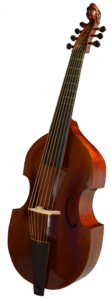About
Welcome to Harp and Strings! My name is Chloe, and I created this blog to share my educational voyage as an adult harp student and learner of other string instruments. Some of my favorite resources are blogs describing educational treks. I hope that this blog serves as a source of encouragement to readers, as I have found encouragement and inspiration from others.
Additional motivating factors in the creation of this blog include acclimating myself to sharing music publicly (I’m a major introvert), and becoming more organized in my approach to practice and reflection to support my own musical growth. If you have any tips, I’d love to hear them in the comments!
The Harp
My harp was made by John Pratt. It’s an Empress model with 40 strings (6A to 1E), Camac levers, and an extended soundboard. The majority of the strings are gut, with nylon in the upper octaves and wire in

the bass. The wood is curly maple. Prior to receiving this harp in July 2016 (shipped from Utah to Oregon!), I had been taking lessons on a 26-string Fullsicle lap harp that I purchased as a teenager with the intention of teaching myself to play. That never happened, but the Fullsicle harp provided a great start during my first few months of lessons. What a transition it was to move from a lightly-strung lap harp to a concert-tension floor harp!
I chose the Empress harp primarily because I wanted the greatest range possible in a lever harp. As a newcomer to the instrument, I knew that I eventually wanted to be able to play pieces by Ludovico Einaudi, and short of a pedal harp, a 40-string lever harp seemed like the best option. I’m also relatively tall, and preferred not to play on a harp I would need to set on a stand.
The Viola da Gamba
My viola da gamba is from the workshop of Charlie Ogle. It’s a Bertrand model bass with seven strings. The bow was made by Louis Bégin. I chose the bass viol due to the availability of solo material. After trying a few different models, I found that I preferred the sound of the seven-string to the six-string models, although it wasn’t an easy decision.

The models with six strings were smaller and easier to hold securely at first try, which made it easier to isolate strings with the bow. However, I am looking forward to the challenge of learning to play on a seven-string viol. I purchased two pieces of leather approximately the size of an 8.5 x 11 piece of paper that make holding the viol easier when draped across the legs, along with a small over-the-door mirror for monitoring bowing while playing. I had previously purchased a piano bench with the intention of using it for the harp. It turned out to be too tall for the harp but it’s a great height for playing the viol.